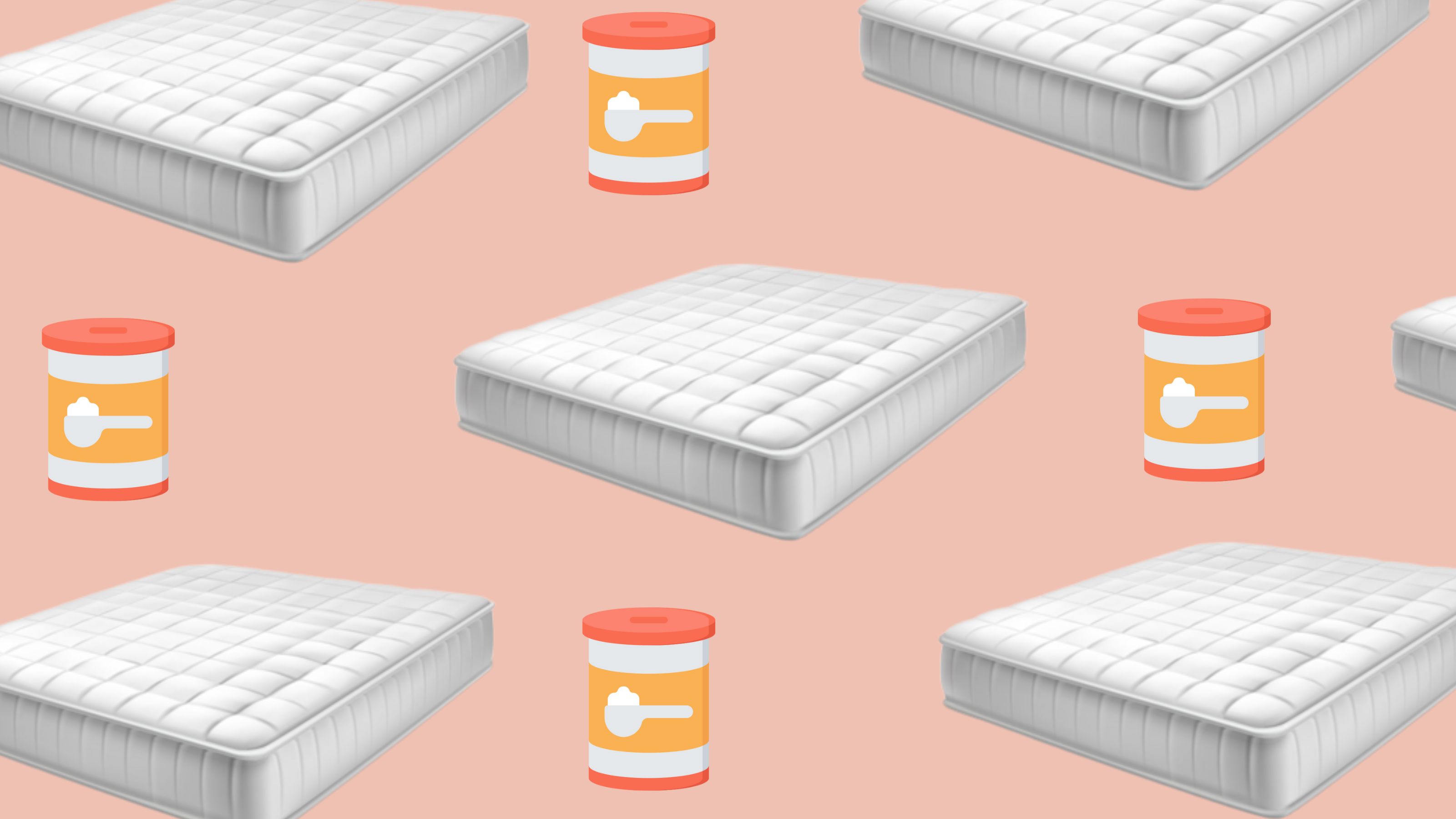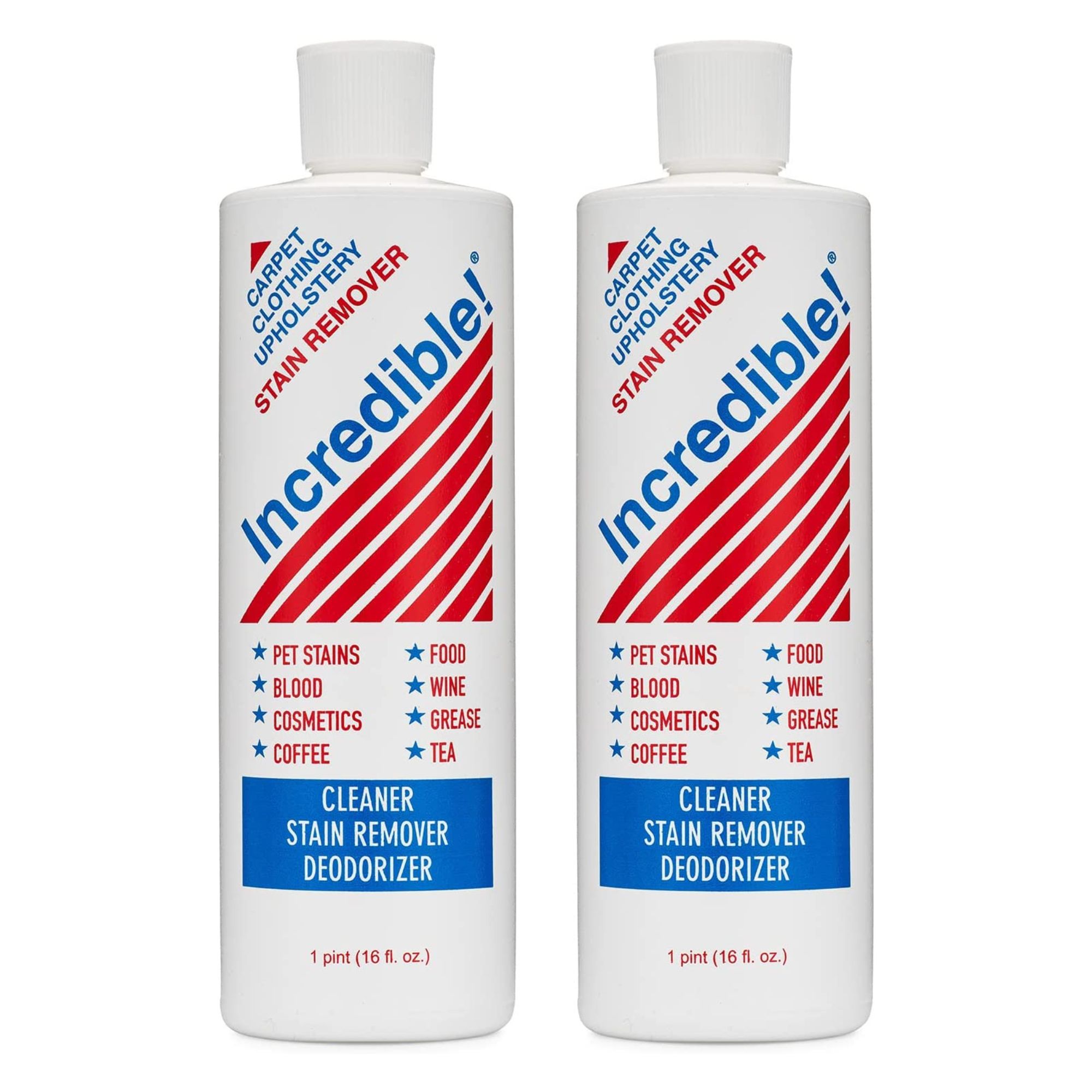

This year I've decided to prioritize self-care and learn how to clean a mattress as part of my sleep hygiene. As someone who would *try* and survive on six hours of sleep and rely on more than one daily coffee, I've really noticed the difference in putting my rest first.
I'm not talking about just getting a few extra hours of Zs. We spend one-third of our lives in bed, and while washing bed sheets may already be part of your cleaning routine, taking care of your mattress is just as important. Over time, mattresses will absorb sweat and spills causing stains, and dirt and debris will lead to a build-up of bacteria you can't see. Who wants to get cozy with that? Not me.
Mattresses are pretty pricey too — cleaning your bed will also extend your mattress's longevity. I've spoken to some qualified sleep experts for their advice on how to clean a mattress. I've tested this method out for myself, cleaning my mattress every few weeks, and it's never felt fresher.
How to clean a mattress
Time: 1–2 hours
Difficulty: Medium
Before you start: If you don't know already, you should find out the type of mattress you have. Is it a memory foam, box spring, hybrid, wool, or latex mattress? The material your mattress is made of will alter your cleaning products and methods.
You should also make sure your bed is totally stripped (duh) before you start the cleaning process. Remove all pillows, comforters, sheets, and protectors. You might as well wash your pillows and the rest of your bedding, too, for the freshest bed possible.
Get small space home decor ideas, celeb inspiration, DIY tips and more, straight to your inbox!
If you have a mattress topper on top, that'll also need cleaning. You can follow this same guide, though we'd recommend cleaning your actual mattress at the same time.
What you'll need
- A good handheld vacuum cleaner
- Baking soda — we love Arm & Hammer's Pure Baking Soda, which you can pick up from Amazon
- A soft cleaning cloth (like these Amazon bestsellers) or brush
- Fabric stain remover, like this Shout one from Amazon
Step 1: Vacuum your mattress' surface
Handheld vacuum at the ready (or the upholstery tool on your cordless vac), first things first, you need to get rid of all the dirt, dust, and dead skin cells. Matt Connelly, founder and CEO of ihateironing states that "giving your mattress a vacuum every few weeks is essential to avoid developing skin or respiratory allergies." If you have pets, it is especially key to clean up pet hair, and for those who love breakfast, lunch, or whatever meal in bed (you know who you are), then you'll want to suck up the crumbs that have gathered beneath the sheets.
To do so, make sure your vacuum nozzle is clean, and work your way from one end of the bed to the other, making sure not to miss any spots. You should vac the sides of the mattress, too, as this is where lots of particles can gather, and lift up the edges out of your bed frame for a very thorough clean.
FYI: If you have a fabric headboard, you can run the vacuum over this as well. Jonathan Warren, director at bed specialist Time4Sleep says that "a weekly vac and spritz of fabric spray will keep your headboard free from dirt and dust, and assist it in smelling nice and fresh."
Step 2: Spot clean with a stain remover
Find all the stains on the mattress surface and spray with a stain remover.
If you don't have a mattress protector on your bed, first of all, get one(!), and second of all, you probably have some stains to deal with. Even if you do have a cover, an especially big coffee spill might've still seeped through. Because you can't put your mattress in the washing machine, you'll have to spot-clean it.
To do so, use a specific fabric stain remover or enzyme treatment with as little water as possible. If you're not wanting to pick up any fabric cleaning supplies, Connelly notes that "at-home remedies can go a long way." You can easily make a cleaning solution with equal parts dish soap and baking soda.
Grab your cleaner (homemade or otherwise), then submerge your microfiber cloth into it. Connelly says to squeeze out as much moisture as possible prior to dabbing it on your mattress stains. (Note: a lot of water can damage a mattress' fibers — especially if you have a memory foam mattress.)
PS: If you're trying to remove blood stains or wash out urine marks, you may want to consider these guides with more info.

If you've got pets


A multi-purpose fabric cleaner
Step 3: Sprinkle your mattress with baking soda
Grab a box of baking soda and sprinkle it all over the surface of the mattress.
You've blasted the stains, but your mattress might still be a little smelly. Spot cleaning is great for visible marks, but it won't necessarily get rid of odors and bacteria build-up you can't see. Putting your mattress out in fresh air and in direct sunlight is a natural way of eliminating any bed smells, but that's not always possible (balcony gals or anyone with a teeny yard, I hear ya). Sprinkling your entire mattress with baking soda is the next best thing — if not a better way to deodorize it.
You can add a few drops of your fave essential oil or use a scented linen spray, like this highly-rated one from Amazon, to get your bed smelling super fresh. Scents like lavender and chamomile are relaxing picks that'll help you sleep better.
Christina Heiser, mattress expert at Saatva, states you should use "up to a full 1-pound box of baking soda if this is the first time you've cleaned your bed." Put an even layer from one end of the bed to the other and leave it for several hours (overnight, if you can). "Then vacuum it up and go over the mattress one more time with the upholstery attachment."
Remember: we recommend Arm & Hammer's Pure Baking Soda, which you can buy from Amazon.
Step 4: Let it air dry completely
Give your mattress several hours to air out and dry completely.
If you left your mattress long enough to fully absorb the baking soda, and you vacuumed up any access, it should be virtually dry. But you should let your mattress air out until it is completely dry to the touch before putting on any protectors or fitted sheets. "Airing out your mattress is beneficial in more ways than one," says Sarah Fishburne, director of trend and design, at The Home Depot. "Not only does it allow any remaining moisture to dry but it exposes your mattress to the sun and fresh air."
Don't worry: to air out your mattress, you don't have to lug it outside or do some Ross from Friends style pivoting down the stairwell if you live in a complex, simply open a window (ideally when the sun is shining) so your mattress is hit with UV rays. Doing this will eliminate bacteria and mold that might be on your mattress.
Step 5: Don't forget to flip
Get a friend to help you flip the mattress to the other side.
Most mattresses will need flipping (or at least turning) regularly to prevent any warping, sinkage, or sagging. So cleaning your mattress and rotating is a great way to tick off two things on your cleaning checklist.
The underside of your mattress is likely to not have any visible stains, but it can still harbor dust, moisture, and more. We'd recommend flipping and repeating these previous steps so both sides are clean and as fresh as possible.
How often should you clean a mattress?
How often you clean your mattress will depend on your sleep routine. Whether you sleep solo, share a bed (with either another human or a pet), are a self-confessed sweaty sleeper, or like to eat your breakfast in bed will determine how often you should be cleaning your mattress. Of course, you'll want to treat any blood, urine, or, big spills immediately, but giving your mattress a good clean can be left to a couple of times a year — one being in the summer months.
Jill Johnson, the vice president of marketing at Tempur-Pedic, says, "You should remove your sheets and protective mattress cover and vacuum the mattress at least twice per year, and go for a full spot-clean once a year."

Louise is the Ecommerce Editor at Real Homes, specialising in sleep content so you can wind-down well. With prior PR experience working for a luxury bedding brand, Louise knows the importance of getting a great night’s sleep. Joining the other side of the desk as a full-time journo, Louise brings her bedding expertise to writing sleep buying guides, reviews, and news for Real Homes. Aside from helping readers get essential shut eye, Louise also writes shopping content for homeware items that’ll add a decorative edge to your space. With an eye for design that won’t snooze on style, but a budget that won’t quite stretch, Louise loves nothing more than a modern designer dupe. From coloured glassware to contemporary storage, anything to upgrade the bare space of her rented East London flat.